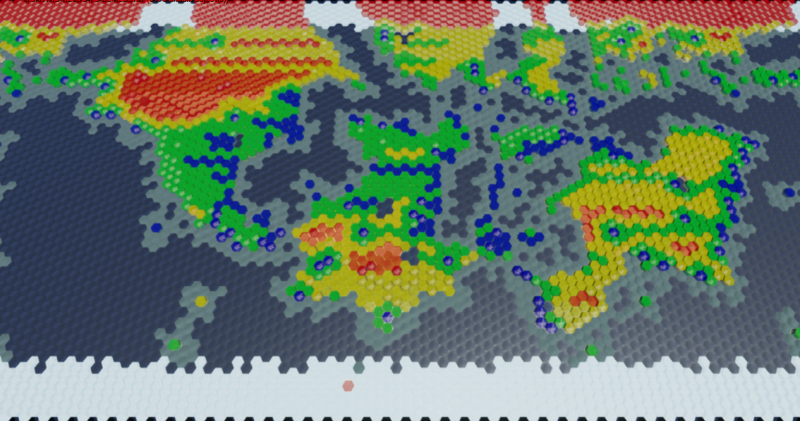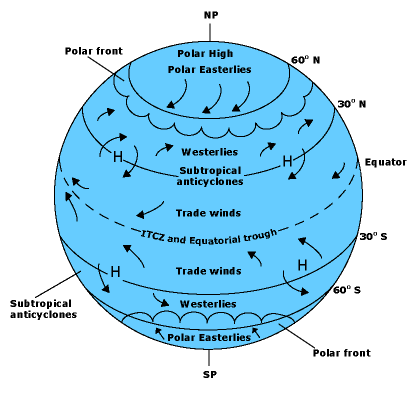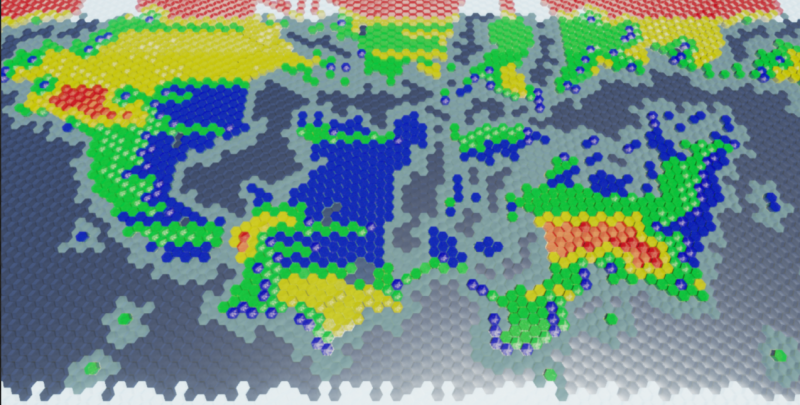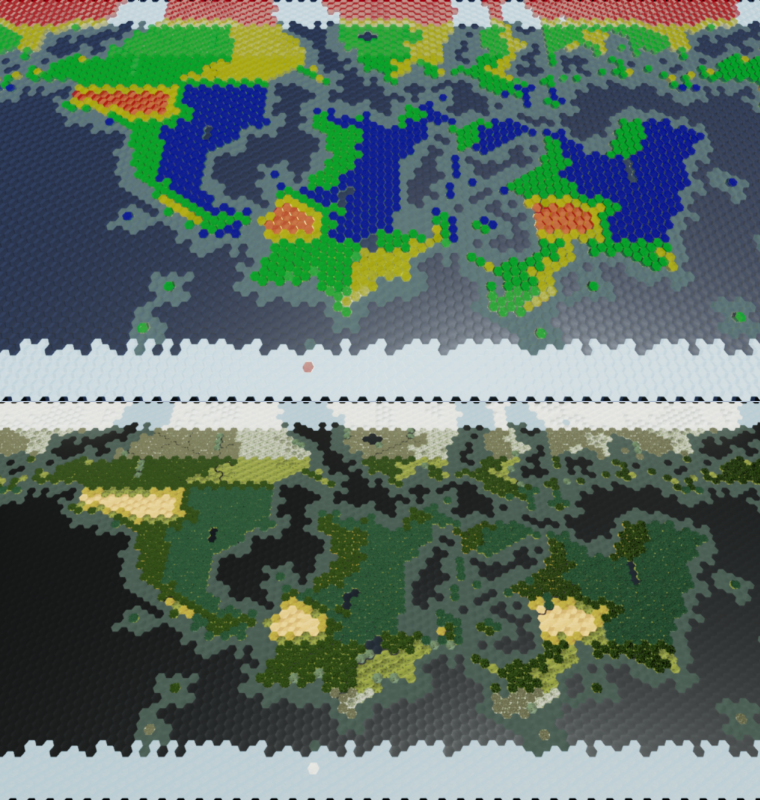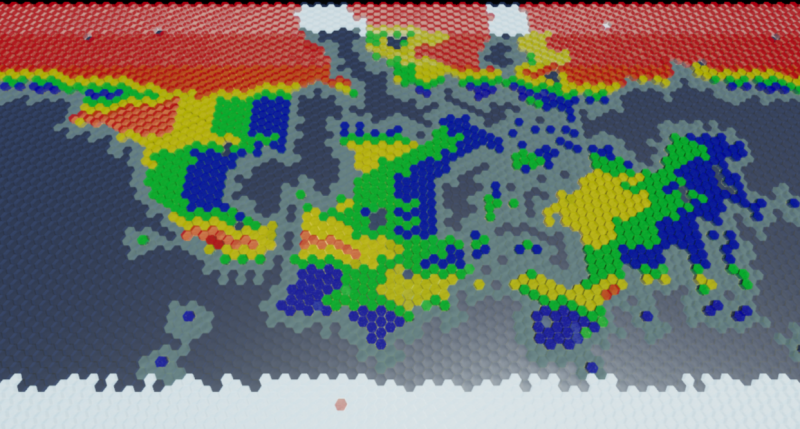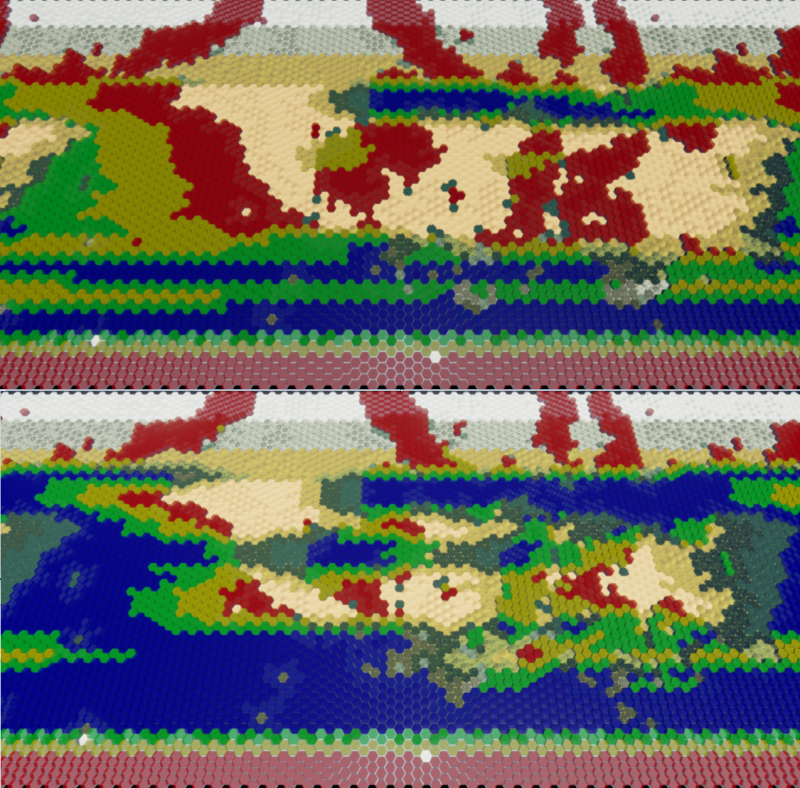Been pretty busy lately, so I have not had much time to put work into the generator. Also, I have been contemplating a better way to handle precipitation. The precipitation depth system I worked out is ok, but its limitations keep nagging at me.
Here is the system I have in mind to replace it:
The precipitation level will exist on a weighted 0-1000 system. As it moves over water and land, the level will rise and fall. The type of seed dropped on any given tile will depend on the precipitation level: 0-249 Arid, 250-499 Semi-Arid, 500-749 Moderate, and 750-1000 Wet.
The increases and decreases to the precipitation level will scale to Map Size. So on size 10, it might decrease by 50, whereas on size 100 it might decrease by 5(or whatever numbers I work out).
There will be a few settings which will drive the precipitation level changes:
These 2 settings would have default values set to “Earth-like”. Increasing or decreasing the setting could make the world wetter/drier, but would still follow the general rules of the system.
Precipitation Uptake - The rate at which precipitation builds when moving over open water. Tropical waters get a bonus, Sub-Tropical get a negative, and Temperate/Tundra are neutral.
Precipitation Dropoff - The rate at which precipitation depletes over landmasses. Tropical depletes slower, Sub-Tropical faster, and Temperate/Tundra are neutral.
These 2 settings will “break” the system and are designed to give the player more control over total map precipitation.
Precipitation Multiplier - This will be used to create unreasonably wet or dry conditions. This will probably affect minimum and maximum precipitation conditions which are generally locked to the climate band they are in(Tropical, Temperate, etc).
Precipitation Penetration - The rate at which precipitation makes it through mountain ranges intact. Earth-like will be 0-10%. I have to have this option since a map with lots of mountains would be extremely dry even if every other precipitation setting were set to extremely wet.
I will also have to take into account maps with no oceans whatsoever, such as a Highlands map and other similar generations. There may be a setting that seeds precipitation separately from the normal system for these cases. Perhaps available only on those map types.
In addition to the East/West winds, there will be 4 East-slanted(45 degree inclination) “jet streams” that will originate from the equator to soak whatever is in their path(think east coast of North America and Asia). Should generally follow the above settings. I probably won’t be able to guarantee these jetstreams hit enough water to gather precipitation, or even that they touch any land on their way north/south. The jet streams in the southern hemisphere generally dump their rain on open water, so that could be common in the generations as well.
![]()
![]() (But seriously, avoid A* unless you really need it)
(But seriously, avoid A* unless you really need it)

